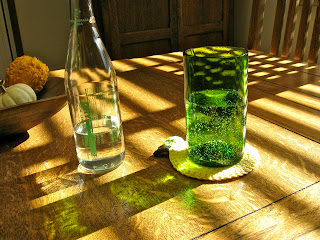Help Provide Safe Birthing Kits to Women in Haiti
For the past three years, Konbit Sante has been spearheading a family planning and maternal health project in the most needy neighborhoods of Cap-Haitien that includes working more closely to support trained birth attendants (TBAs) who attend the vast majority of births in the community. They began supplying them with safe birthing kits to use in their deliveries. TBAs attend the vast majority of births in Haiti and have no formal medical training to speak of. The kits represent a “value added” component to their services, offer a measure of status, and are well received. There is ample evidence internationally that the kits can reduce infant and maternal mortality.
When you simply need a clean piece of plastic sheeting, a clean piece of string, a new razor blade, an alcohol wipe, and hand sanitizer to save lives during delivery, it is humbling. When you can send a message of hope and solidarity with mothers in Haiti by including a hand made receiving blanket, it is empowering. We may not be able to change much about the challenging reality faced by mothers and children in Haiti, but we CAN do this. And it will matter.
So for Project 11 we are going to provide safe birthing kits to Konbit Sante. This project will include some handmade items and some store bought. This is a great project for a group as many of these things are purchased in bulk.
 Contents of safe birthing kit:
Contents of safe birthing kit:- 1 small bar of soap (updated 1/16/2011)
- 1 piece of clean plastic sheeting (3 feet wide by 4 feet long)
- 1 piece of clean string, 24 inches long
- 1 packet alcohol wipe
- 1 set of sterile latex gloves
- 1 packet (or travel container) Purelle
- 1 handmade tote bag
- receiving blanket–36 inches square
- small “stuffy” toy
*** updated 1/16/2011 – We have received some great questions about the contents of the delivery kits. For more specifics about the contents, please go to this post where we have answered your questions. Thanks!
Konbit Sante is asking for pre-assembled birthing kits. You can buy the supplies (or request donations from local businesses), wrap them in the plastic sheeting, and put them all in a handmade bag. The receiving blanket and toy are optional, but are a very sweet touch that we hope you include. That blanket is the first blanket that sweet baby will be wrapped in. Both of these items are the handmade part of the birthing kits and show a little extra love for the newborn baby.
This simple bag will save lives in Haiti, and making the commitment to creating it will add meaning to your own. When the need is so great and our own lives are so full, it is difficult to know where to start. The simplicity of this project gives us the perfect way to become involved–make a contribution to helping start out a baby’s life safely.
The deadline for Project 11 is March 1, 2011.
Please mail your complete bag to:
Konbit Sante Cap-Haitien Health Partnership
362 US Route 1
Falmouth, ME 04105
USA

 Newer, faster, smaller mobile devices hit the market every day. As one of the industry leaders, Apple’s products are highly sought-after by tech enthusiasts, which means unused,
Newer, faster, smaller mobile devices hit the market every day. As one of the industry leaders, Apple’s products are highly sought-after by tech enthusiasts, which means unused, 






